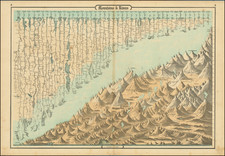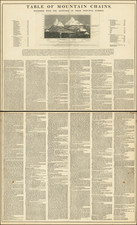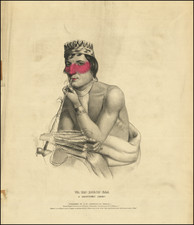Ground and Aerial Images of the First Underwater Nuclear Explosion
Vintage set of six photographs taken in the seconds following the first-ever underwater detonation of an atomic bomb. These visually stunning images, which show a vast array of phenomena unique to underwater tests, are remarkable in conveying the power of a nuclear bomb blast.
This collection includes four images taken from Bikini Island and two further aerial images taken from various B-17 Flying Fortresses. They document the progression of the explosion from an initial spherical "Wilson Cloud" through to a vertical spray column which eventually collapses.
Crossroads Baker
The first-ever underwater atomic bomb test, images of Crossroads Baker are considered unique for the various phenomena they show. Conducted as part of Operations Crossroads, a testing series designed to understand the abilities of atomic bombs as anti-ship weapons, this test was designed to measure the impacts of an underwater explosion.
Prior to the test, there was little understanding as to what would happen during the explosion sequence. As such, these photographs used to document the explosions would have been used by scientists trying to explain the features of the explosion seen. Yet, so much confusion remained that a conference was held two months after the test to standardize nomenclature.
The sequence of events following the explosion at Mike Hour is as follows: 1) an underwater bubble containing a heated fireball expands until it reaches the surface and seabed, subsequently digging a 30-foot deep and 2,000-foot wide crater; 2) once it hits the air, a supersonic shock wave expands to the top of a spray column. Simultaneously, a spray column develops but is hidden from sight; 3) an area of low-pressure forms behind the shock wave, in which fog condenses, creating a "Wilson Cloud;" 4) the Wilson Cloud dries out, revealing the rising spray column; 5) the spray column collapses. This entire sequence lasted less than a few seconds.
The images presented capture events 3-5. In this sequence, no mushroom cloud is formed, rather, all material collapses back into the ocean. This caused severe contamination issues, which were not present in all previous atomic bombs (which were designed to be self-cleaning with a high-altitude detonation). As such, cleanup efforts following the blast were all but unsuccessful and forced the cancellation of future Operation Crossroads tests.











![(California Photographs) [Group of 4 photographs of John H. Boden of Haywards, California, custom house broker in San Francisco]](https://storage.googleapis.com/raremaps/img/small/93197.jpg)

![[Uncaptioned image of two figures seated in front of a tipi, mounted albumen print]](https://storage.googleapis.com/raremaps/img/small/78744.jpg)
![(Photograph album) America | Hawaii. 1885. [Photographic album of Hawaii, Yellowstone, Utah, Colorado, and Niagara Falls]](https://storage.googleapis.com/raremaps/img/small/87949.jpg)

